A glorious start turned to crisis for Charles — can he pull it back?
After 70 years on the throne, Queen Elizabeth was a hard act to follow for her ageing heir, but the transition was smooth and the coronation a triumph. Then illness hit. Now, the Palace is forced to rethink how it does business.
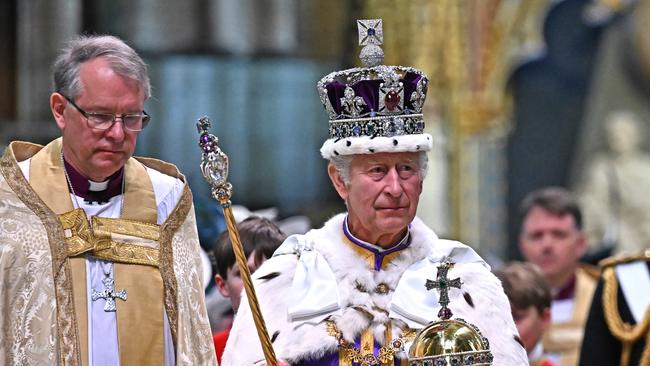
On the morning of June 2, 1953, Queen Elizabeth II was informed that someone had beaten her to the Coronation Chair. A black cat called Matins belonging to a member of the clergy had installed itself in the Gothic high-backed wooden armchair at Westminster Abbey and was sleeping soundly. Seven decades later, the tale of the clergyman’s scene-stealing black cat, perceived by some at the time to be an auspicious sign for the new reign, was retold in a truly modern fashion – on the abbey’s Instagram account.
No one is suggesting King Charles III has benefited from any similar sort of good luck charm. Approaching the first anniversary of his coronation, this has been, if not an annus horribilis, at the very least 12 months in which his reign has been wrenched off track. News of not one but two cancer diagnoses in the family has rocked an ancient institution that stands on its ability to exude continuity and stability. With the King and his daughter-in-law the Princess of Wales – two of the royal family’s star turns – out of action, the Palace has been forced to rethink how it does business, and answer two questions in particular: how quickly can it get back to business as usual? And how does Charles’s illness reorder and refocus that business?
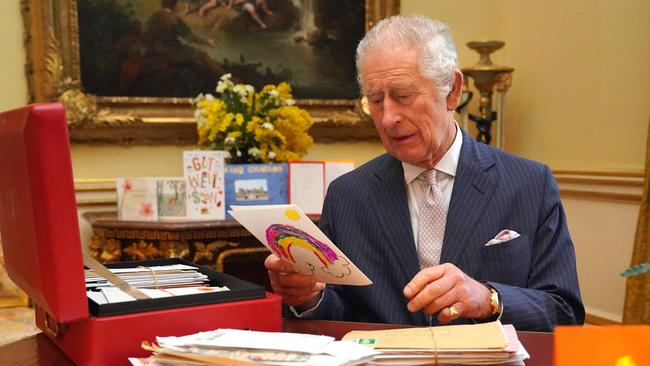
Messages of reassurance from the Palace can only go so far until the doctors can give a clean bill of health. The mood music, however, is positive. The King was seen steady on his feet on Easter Sunday, shaking hands with members of the public outside St George’s Chapel in Windsor. And so far, courtiers continue planning for a trip by the King to Australia in the autumn.
Fortunately, Charles, a man of faith, is not one for entertaining superstition. If he were, he might have changed his name when he ascended the throne, as is a monarch’s prerogative. Some thought he would, if only to avoid being linked to the supreme bad fortune of his namesakes. Charles I was maligned almost from the moment he came to the throne in 1625 to his death on the scaffold 24 years later. Most of his mistakes were self-inflicted.
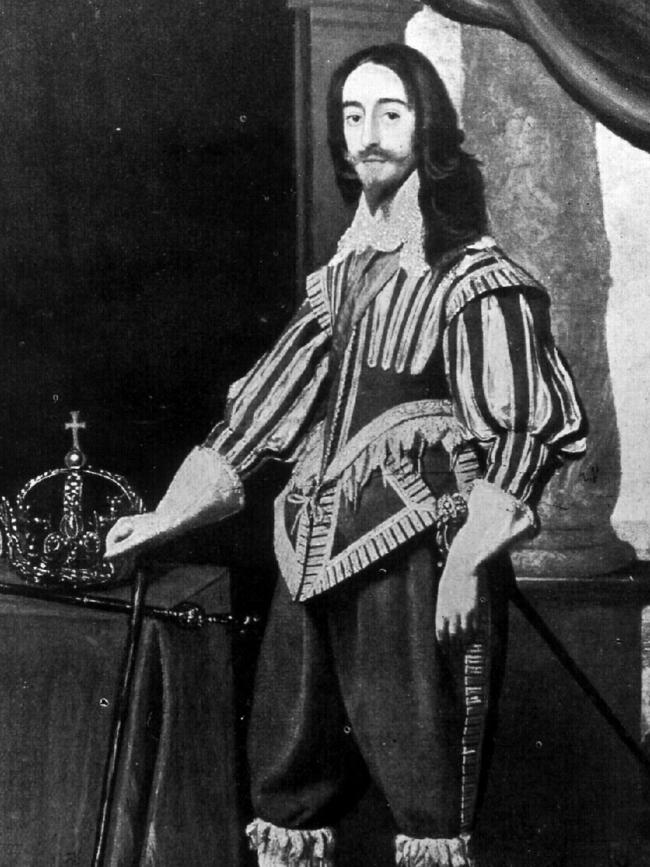
His choice of wife, 15-year-old Henrietta Maria, was unpopular on account of her being French and Catholic. His love of the arts and modern sensibilities did nothing to appease his relations with the puritans in parliament. England’s war with Spain was a disaster and his arrogance did little to curry favour with either the public or the politicians.
Charles II was hardly a blueprint for Charles Windsor either. Returning from exile, where he had fled after his father’s execution, he owed the restoration of the monarchy to a military coup. Rather than “reading the room”, as we might say today, the so-called “King of parties” oversaw a new form of freedom. It meant his name will forever be remembered for ushering in an era of louche behaviour, the likes of which inspired the work of the playwright William Wycherley and his contemporaries. As an arts lover, the present King Charles will be only too familiar with the Restoration dramas of his predecessor’s reign.
When Charles III took over, there was no such drama to overcome. When he ascended the throne aged 73 in September 2022, all the signs of a honeymoon glow were there. The new King seemed to take to the part immediately, and this was far from guaranteed. Even the most ardent monarchist could not have been sure that, after 70 years of Elizabeth II, the “transition”, as the Palace is so fond of calling it, would be quite so smooth.

The worries were clear: that the latitude of expression Charles had allowed himself as Prince of Wales would sit ill on a monarch but would be hard to shake. Yet they appeared to dissipate almost instantaneously when a new statesmanlike version of Charles appeared to deliver his first address to the nation as King from Buckingham Palace to television screens – and mobile handsets – around the world. There were, of course, reassuring signs the same old Charles was still there underneath as he deployed a quote from his beloved Shakespeare, paying tribute to his late mother with the words “may flights of angels sing thee to thy rest”.
In those first few days of the reign, most things went to plan. After a minor kerfuffle with a malfunctioning pen, both King and Queen settled into their new roles. On May 6, the transformation seemed complete. As the Queen, and then King, walked down the aisle at the abbey on their coronation day, they wore a similar expression of awe and anxiety. Once crowned, the journey back up the aisle was a different story. Both appeared to show a physical change far beyond the jewelled edifices on their heads. They were unmistakably proud, and more than a little relieved, that it had gone without a hitch. Behind the scenes, the Palace had pulled off the huge managerial task of combining two royal households into one, and convincing the public that the King’s wife would be known as Queen Camilla rather than the more cumbersome Queen Consort.
Buoyed by strong public approval ratings – palace courtiers keep just as close an eye on opinion polls as politicians in Westminster – it seemed clear that the King and Queen were off to a good start. But how to proceed? Charles III made history in becoming the oldest monarch to ascend the throne after such a long wait and such an illustrious reign. His mother was a tough act to follow, in other words. The most recent example of such a transition was Edward VII who followed his mother Queen Victoria’s long reign in dramatic fashion. He made what seemed at the time to be radical changes, or as one contemporary writer put it, he “tore down the drapes of the Victorian court and let the light flood in”.
Charles has been quieter in disposing of the old ways. That’s not to say there haven’t been changes at the royal court, but Charles has had the wit and wisdom to ensure they were subtle. Encouraged by a digital-savvy team, he has brought the office of the Head of State up to date. They took risks that terrified some at the Palace but sparked widespread relief when they paid off. A documentary crew was invited in to chart the King’s first year. He was seen joking about his “sausage fingers” in Coronation rehearsals and it became a hit on Boxing Day. The Palace even teamed up with Sky for an augmented reality experience that gave users the chance to “bring the Crown Jewels to your living room”. Nor has Camilla played it safe. Even as she deputised for the King, she posed last month at Buckingham Palace with a personalised Barbie created in her image. “Brilliant, you’ve taken about 50 years off my life,” she said of the youthful-looking doll. The same day she used a speech to praise the suffragettes who threw stones at the Palace windows in 1914.
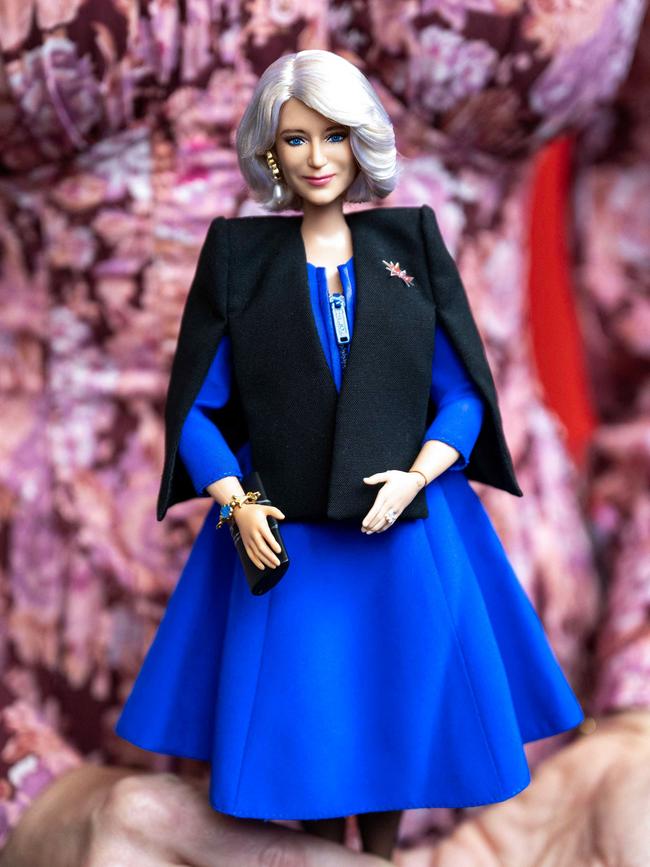
In last year’s coronation weekend alone, there were 400 million digital engagements on the royal family’s social channels and the Palace was able to pat itself on the back when it earned a “Golden Play Button” on YouTube for amassing more than a million subscribers. There were surprises, too, when the King took a coronation message to the people with a personalised “mind the gap” recording for the London Underground. On trips, Charles has allowed himself to follow the lead of Instagram influencers or US presidents with film reels on planes showing him leafing through paperwork.
Admittedly, even before the health crisis, it wasn’t all plain sailing. His first planned foreign state visit to France was postponed because of riots, with President Macron pulling the plug shortly before it was due to take place. However, the King’s visit to Germany went ahead and the French visit followed several months later. The trips proved a hit both at home and abroad. How can the Palace be so sure of this success beyond the cheering crowds? It deployed artificial intelligence to measure online sentiment towards the royal family online. Further afield, digital monitoring of social sentiment in Kenya, for example, showed it rose from a net positive 28 percentage points to 78 points. Even in Britain, the Republic protest still looks to be, at best, a minority sport played by fairweather competitors. On Maundy Thursday this year, banner-waving protesters arrived with loudspeakers at Worcester Cathedral to heckle the Queen but appeared to have dispersed before the end of the hour-long service.
So far, so good for Charles. Or that was the case until January when the King and Princess of Wales were both in the same hospital in London. We now know that both emerged requiring treatment for cancer. In Kate’s case, she released a video in which she explained that cancer had been found, following major abdominal surgery. While the type of cancer has not been revealed, she said she was undergoing preventive chemotherapy. The King has been returning to London – from Windsor, Highgrove and Sandringham – for treatment, all the while ensuring that he shuttles between home and office, Clarence House and Buckingham Palace respectively, in the state Bentley so he can remain visible and wave to passing pedestrians who glance his way.
Charles’s ill-starred year doesn’t end with health. He might have thought Netflix had had their fun with him in The Crown but more was to come. This month his brother Prince Andrew’s catastrophic interview with BBC Newsnight was relived in the Netflix drama Scoop, and the King’s son Harry is planning a television program with the same network about polo, the sport of kings, while his wife will be involved with a cookery show.
When it comes to the King’s health, however, the mood music is positive. For now, courtiers prefer to talk in riddles, saying things like, “We’re hoping it will be sunny and the forecast looks good.” What they mean is that within weeks it is hoped we might see the King return to a more public-facing role, particularly in the northern summerd more engagements can take place outside, lowering the risk of contracting a virus. No doubt the relief will be palpable at Kensington Palace as Prince William and Kate face their own issues and are not in a position to take on more duties.
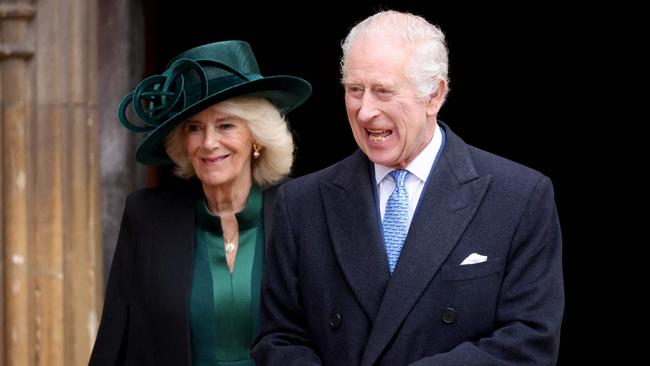
The Palace knows that coming up are the big set pieces of the royal calendar, at which a King’s absence would be noted. There is the 80th D-Day anniversary on June 6 followed by Trooping the Colour, the monarch’s annual birthday parade on June 15, and then Royal Ascot. Aside from the big ticket events, there is work to be done. Charles has yet to visit a Commonwealth realm as King. The community of countries that meant so much to his mother is also of profound significance to him. The King is understood to want to attend the biennial Commonwealth Heads of Government Meeting, the first of his reign, when it is held in Samoa in October. The plan would be to combine the visit with a trip to Australia.
Aside from soft diplomacy, there are complicated issues on the other side of the globe. Prince Harry remains fifth-in-line to the throne and, as Charles has said, a “much-loved” member of the family. Yet he was only permitted a brief audience with his father – less than 45 minutes – when he flew to Britain from his home in, California, after the King’s cancer diagnosis. The King will have to have a frank conversation with his wife and son about the royal family’s involvement with the Invictus Games. Both Camilla and William are understandably less likely to want to cheerlead Harry’s venture after finding themselves the chief targets of his criticism in his autobiography, Spare.
Prince Andrew remains a sticking point. Charles is still paying the mammoth bill for his brother’s security while he remains in situ at Royal Lodge with his former wife, Sarah Ferguson. While there is no appetite to evict them while the duchess recovers from her own cancer ordeal, the time will come when Andrew is encouraged to move out of the Lodge and into more modest digs.
One reason the late Queen was held in such high regard was her hard work and unstinting commitment to duty. Charles knows this. And while he has always worked hard, he sometimes courted criticism for the way in which this played out – burning the midnight oil as he scribbled away on his now infamous black spider memos. Now, as we near the first anniversary of his coronation, we don’t see a petulant prince but a King who shows strength by revealing an endearing vulnerability. Rather than firing off opinions to government ministers, he is seen telling the prime minister that the “wonderful messages and cards” he has received have “reduced me to tears most of the time”. Perhaps the most profound adversity faced by King Charles III could turn out, in the end, not to be the worst stroke of luck.
The Times

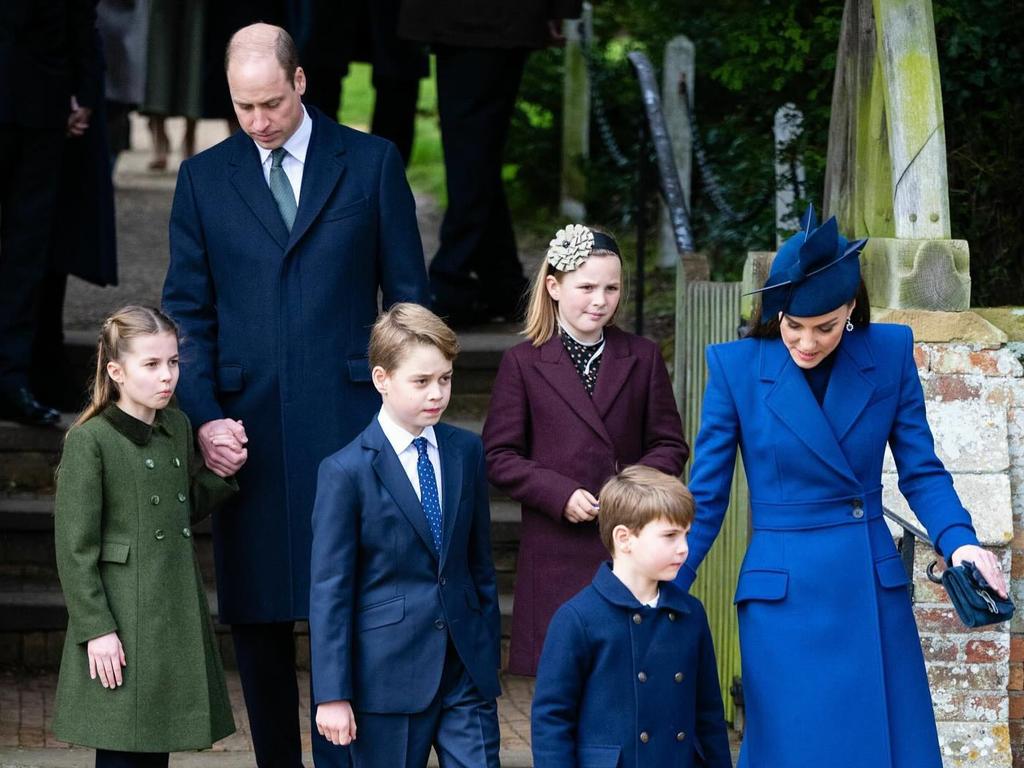

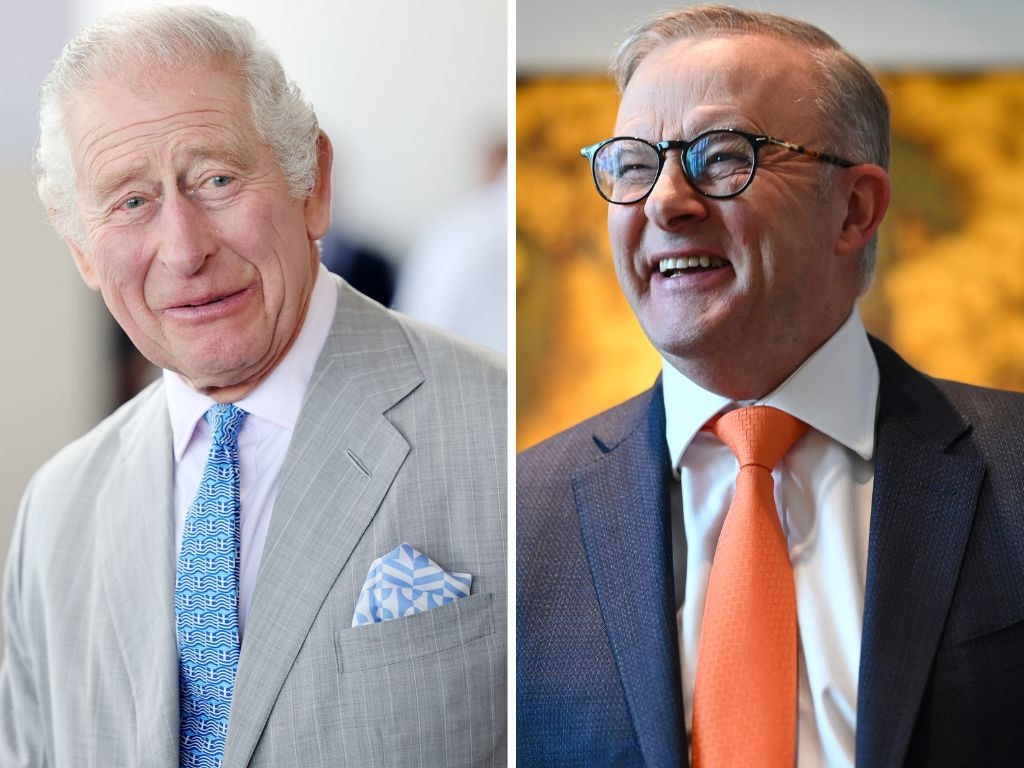

To join the conversation, please log in. Don't have an account? Register
Join the conversation, you are commenting as Logout